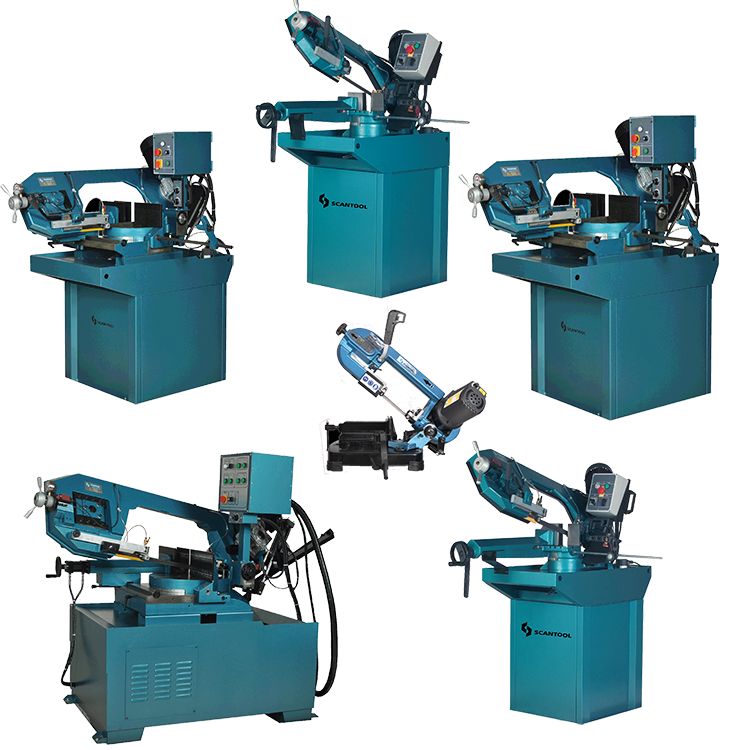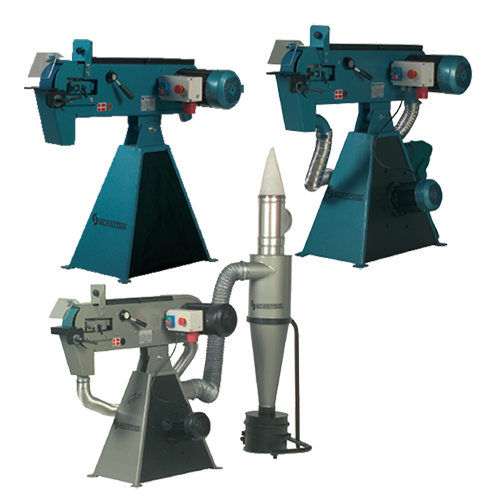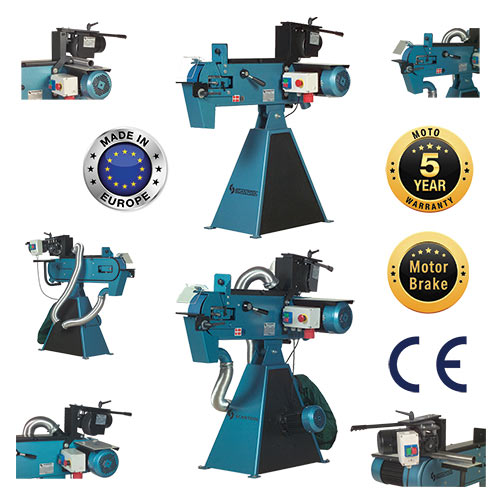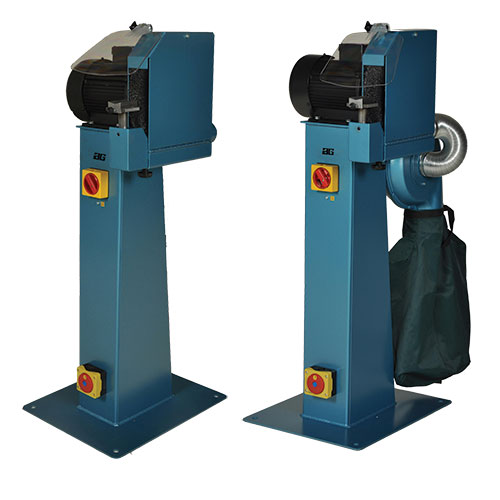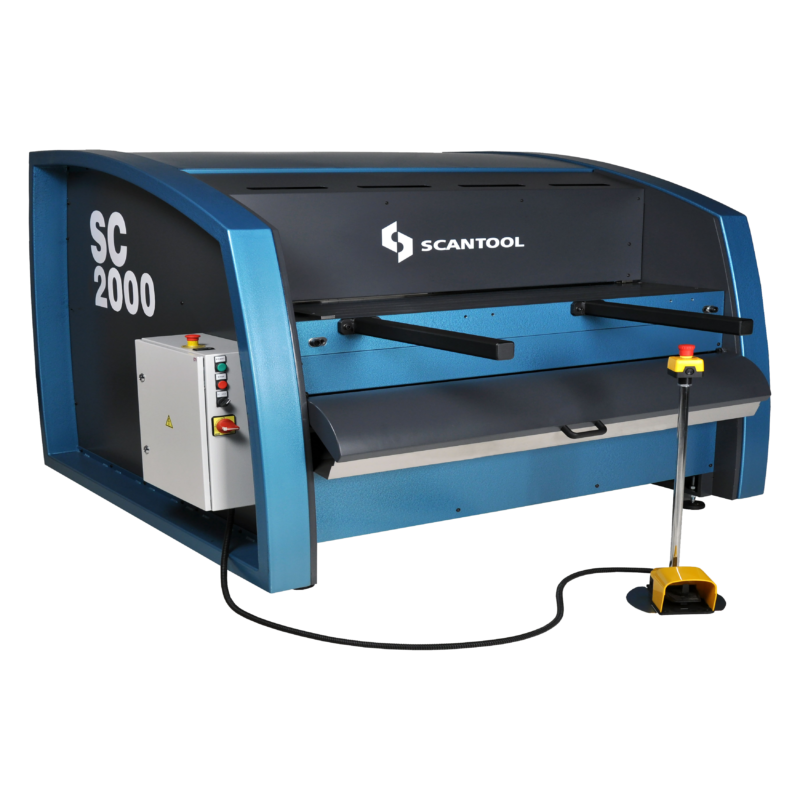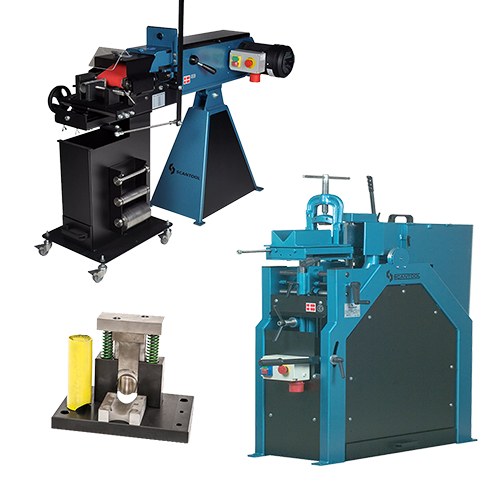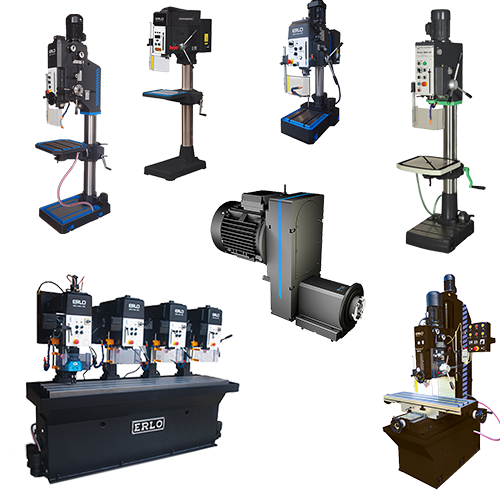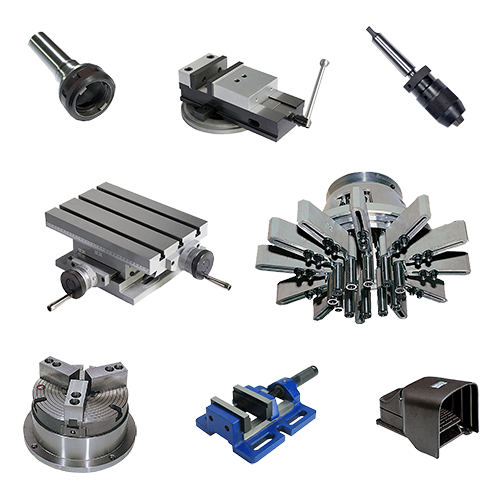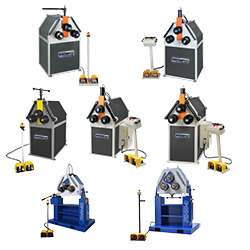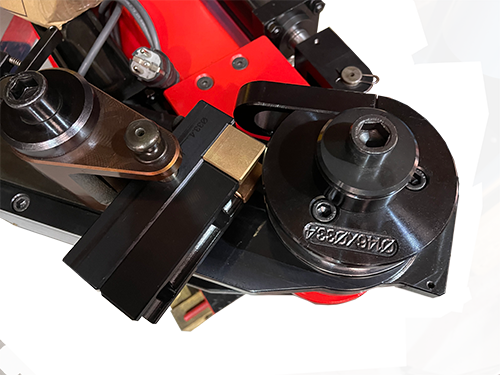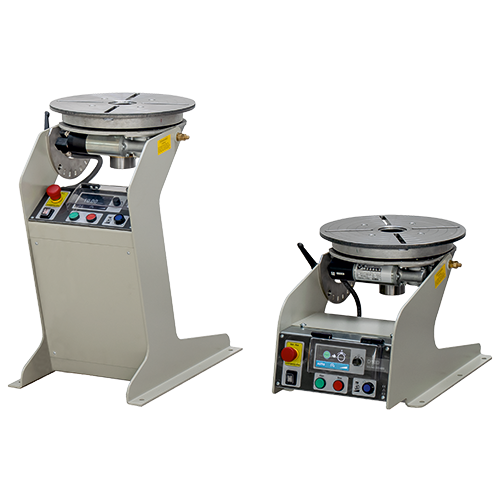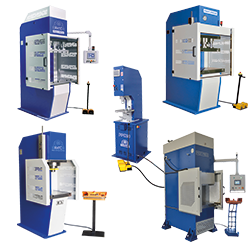Frequently asked Questions about C-frame presses:
Where can I view your C Frame Press Offering?
We offer over 25 different C-Frame presses that have different tonnages, controls and features and they can be viewed by clicking HERE.
What sizes to C-Frame Presses come in?
C-Frame presses are classified by the amount of tonnage the hydraulic system can produce and typical presses range between 16 and 250 tons.
Can you control the pressure on a hydraulic C-Frame Press?
Yes, the pressure is adjustable and controlled on a hydraulic C Frame Press. This is accomplished in a variety of ways and on the more basic models it is done by manually adjusting a pressure valve within the controlset of the machine. More complex machines have their pressure adjusted programatically through the HMI.
Can you control the speed on a hydraulic C-Frame Press?
Yes, the speed is adjustable and controlled on a industrial hydraulic C Frame Press. On simpler press machines this is accomplished by manually adjusting a flow valve within the controlset of the machine. More advanced machines with Human Machine Interfaces (HMI) have their speed adjusted programatically through the HMI.
Can you arrange delivery, offloading, placement, installation, power hookup, and training?
We offer a complete front to back service including training. We find a way to get presses into locations that seem almost impossible.
What is the largest C-Frame press offered?
The largest standard C-Frame press offered is a 250 tons, but bespoke tonnages and sizes are available for each press offered, even up to and beyond 1000 tons.
What is the largest C-Frame press offered?
The largest standard C-Frame press offered is a 250 tons, but bespoke tonnages and sizes are available for each press offered, even up to and beyond 1000 tons.
What are the differentiates the offered C-Frame Presses?
There are a variety of features that differentiate C-Frame presses the primary one being the tonnage produced by the incorporated hydraulic system and cylinder. Other features HMI or Micro-switch stroke control, pressure or tonnage control, speed control, safety features, stroke activation by hand or foot control, bolster (bottom) table size, slide (top) table size, and the physical dimensions of the press.
Do all C-Frame Presses have a computer controller?
Not all offered C-Frame presses have a computer controller or HMI (Human-Machine Interface) and are controlled by traditional micro-switches and foot pedals or palm buttons. An HMI offers more precise control of the presses features, but micro-switches and foot pedal and palm buttons, once set up are just as efficient during production runs, but are limited from the flexibility and integration perspective.
What controls the stroke length of a C-Frame Press?
There are a typically two different mechanism that can control the stroke of the press. The first being a set of micro-switches which are set by the operator to control the top return position and the extended or bottom position of the stroke. The micro-switch mechanism has a metric analog linear scale to assist with setting the two positions. The second mechanism is an incorporated HMI (Human-Machine Interface) that has data entry pockets for the top and bottom stroke positions of the press. The overall-stroke is limited by the physical dimensions of the the press no matter what control is implemented.
What safety features come with a C-Frame Press?
The standard safety features offered on a press are dictated by the attainable stroke speed of the press. If the press can advance faster than 11 mm per second some form of guarding must be incorporated on the press such as caging or light curtains with light curtains being the method of choice in current times. Presses with light curtains have a keyed switch to disable the light curtains for machine setup purposes and when disengaged the press speed is limited to 11 mm per second. Presses that stroke slower than 11 mm per second will have strategically placed E-Stop buttons incorporated into the press system.
Can I use my current tools with a C-Frame Press?
C-Frame presses do not come with standard tools, but if a customer already has legacy toolsets these tools are useable as long as the chosen press has adequate vertical daylight and horizontal daylight so that the tools can fit into the press. The toolset will also need room to open enabling the insertion of the workpiece into the die. Another consideration is making sure that both the upper (slide) table and lower (bolster) table of adequate size to allow for safely securing and clamping the toolset in the press.
Are there standard tools offered for use with a C-Frame Press?
Standard tools for punching, rounding, forming, slotting, tube notching are available from stock, and upon request are customised to suit the customers individual needs. Overall bespoke tools can also be developed to suit the customers needs.
Are C-Frame Presses suitable for production runs?
C-Frame presses are suitable for short and long run production. The customer must consider the quantities that they wish to produce on an hourly, weekly, monthly, or annual basis and then figure from there the required production quantities per minute and then find a press that has a stroke that accommodates the product requirements. A fast stroke is not always the answer either; although a press may have an large stroke capacity and slower advance rate, the stroke controls can limit the overall stroke making the stroke almost as quick as press with quick stroke advance and return rates.
How do I secure a tool in a C-Frame Press?
Securing a toolset or die set in a C-Frame press is achieved in a a variety of ways the most common being with die clamps using DIN-60 T-Slots in the press slide and bolster tables. A T-Nut slides into the T-Slot and then a bolt goes through a clamp and into the T-Nut. The press setter then applies the required torque to the bolt to secure the tool. More complex and technological systems are also available but are typically used with large scale and automated production systems.
What is the maintenance schedule for a hydraulic C-Frame Press?
Hydraulic C-Frame is relatively simple and includes a daily testing of the incorporated safety features, cleaning the machine and the tables, keeping the area around the press clean, and doing a regular check of the hydraulic fluid levels. Some companies have an aggressive PM schedule and will completely flush and replace the hydraulic oil on an annual basis, and some companies will simply check the oil level and top up on an annual basis, which is fine as long as the overall quality of the oil is not degraded or dirty. The Workshop Press Company will provide a service schedule on customer request. Service Packages are offered to the customer upon request and will include a 6 month check and after that checks at the purchase anniversary date. The length of the contract is dictated by the customer.
Are all C-Frame Presses Hydraulic presses?
C-Frame presses are either hydraulically or mechanically driven. A hydraulic C-Frame press has a piston that moves the slide table to create the pressing action. A mechanical C-Frame press will have a fly-wheel or drive mechanism that engages which then drives the main piston down for pressing processes.
Does a C-Frame hydraulic press require a hydraulic cooling system?
Not all Hydraulic C-Frame presses require a cooling system integrated into the hydraulics system. The main factors determining whether a cooling system is required is the geographical location of the press which is directly related to the ambient climate of the press. If the normal and average temperature is 20 degrees Celsius or higher, an evaluations needs to be carried out to ascertain whether a hydraulic cooling system is needed.
Can bespoke controls and features be added to a standard C-Frame Press?
The standard product lineup of C-Frame presses come is broad and complete with a rich and extensive offering of controls and features, but in certain instances or in certain situations bespoke controls and features are required. Some common bespoke features are special guarding, modified guarding to suit an application, modified hand controls, modified foot controls, combined hand and foot controls, HMIs (Human-Machine Interface) integration on non-HMI machines, larger tables, modified DIN-650 T-Slots, increased vertical or horizontal daylight, and special control cabinet locations. It is possible to modify to suit the customer’s requirements.
Can I have a foot activated versus a hand activated stoke controls?
Changing hand palm button controls for foot pedal controls, or vice-versa is possible.
What are the different types of C-frame presses?
There are two main categories of C-Frame Hydraulic Presses.
-
- Manual C-frame presses are powered by a lever that powers a hydraulic cylinder, and they are typically smaller and less expensive than motorised hydraulic presses. They are a good option for light-duty applications, such as hobby crafting or small-scale manufacturing.
- Hydraulic C-frame presses are have a hydraulic cylinder that has a pumping system that is driven by an electric motor, and they are capable of exerting much more force than manual presses. They are a good option for heavy-duty applications, such as metalworking or automotive manufacturing.
Within these two categories, there are also a variety of different sub-categories of C-frame presses. Some of the most common sub-categories include:
-
- Benchtop presses: These are small, and sometimes portable presses that are designed for and used on a workbench. They are a good option for hobbyists or small businesses that need a basic press for light-duty applications.
- Floor presses: These are larger, more powerful presses designed for and used on the floor. They are a good option for heavy-duty applications, such as metalworking or automotive manufacturing.
- Servo-hydraulic presses: These are the most advanced type of C-frame press. They use servomotors to control the speed and force of the press, which allows for greater precision and accuracy. They are a good option for high-volume manufacturing or for applications where precision is critical.
No matter what your needs are, there is a C-frame press that is right for you within the large offering from The Workshop Press Company. Do some research on your own to find the press that is best suited for your application, or if you have questions or want some guidance contact our professional sales team and they will be sure to assist you in finding a press that will help you get the job done in and efficient and profitable fashion.
What are the benefits of using a C-frame press?
C-Frame presses have been around for a long time and for a good reason. They offer a workshop versatility, durability, safety, and at affordable prices.
-
- Versatile: C-frame presses are used for a vast variety of applications, making them a essential and valuable tool for any metalworking shop.
- Durable: C-frame presses are made from high-quality steel and components and are built to last.
- Safe: C-frame presses come with a variety of safety features such are strategically placed E-Stops, light curtains, pressure controls, and physical safety screens to protect the operator.
- Affordable: C-frame presses are a cost-effective way to add metalworking capabilities and flexibility to your shop with affordable entry costs and reasonable levels of skill required to take the machine to a production state.
What are the different applications for C-frame presses?
To list a few of the types of jobs that a C-frame press can do: Punching, Deep Drawing, Blanking, Coining, Straightening, Forming, Bending, Drawing, Riveting, and Assembly.
What are the factors to consider when choosing a C-frame press?
There are many factors to consider when choosing a C-frame press. A few of the most important factors are: Tonnage, Advance Speed, Accuracy, and Price.
-
- Tonnage: The tonnage of a C-frame press is the amount of force that the hydraulic system can generate in the cylinder and then exert. The tonnage that you need will depend on the type of work that you will be doing and the materials being used. for example, if you will be doing heavy-duty stamping in 5 mm steel, you will need a press with a higher tonnage than if you will be doing light-duty forming in 1.5 mm aluminium.
- Speed: The speed of a C-frame press is the rate at which it can advance the ram to the working position and then return the ram to the programmed return position. The speed that you need will depend on the type of work that you will be doing. for example, if you will be doing high-volume production, you will need a press with a faster speed than if you will be doing one-off jobs.
- Accuracy: The accuracy of a C-frame press is how finite the ram can positioned or moved in its vertical movement. The accuracy that you need will depend on the type of work that you will be doing. for example, if you will be doing precision metalworking, you will need a press with a higher accuracy than if you will be doing general-purpose work.
- Price: The price of a C-frame press will vary depending on the tonnage, speed, accuracy, controls, the type of HMI that is integrated, additional safety features, any required cooling systems, and other features. The larger the press and the more features it has the more expensive the press will be. As all our presses are customisable, It is important to set a budget before you start shopping so that you do not overspend.
Once you have considered all of these factors, you will be able to choose the C-frame press that is right for you. Our professional staff can help you match your budget to your C Frame press production requirements, so contact us to discuss your requirements.
What are the costs of C-frame presses?
The price of a C Frame Hydraulic Press varies greatly depending on the chosen tonnage, speed, accuracy, controls, the type of HMI that is integrated, additional safety features, any required cooling systems, and any other required features. Like most products in the world the larger the press is and the more features that are integrated into the press, the more expensive the C Frame Press will be. It is important to set a budget before you start shopping so that you do not overspend.
Here are some general price ranges for different types of C-frame presses:
- Manual C-frame presses: £100-£500
- Hydraulic C-frame presses: £3,500-£150,000
- Servo-hydraulic C-frame presses: £50,000-£300,000
It is important to set a budget before you start shopping so that you do not overspend. You should also consider the cost of maintenance and repairs when making your decision. These are general guidelines, so please contact our sales staff to discuss your requirements, from there we provide a quotation for the right machine for your needs.
How do I maintain a C-frame press?
C-Frame Presses in comparison to other machines that are used in a production environment are generally easy to maintain. Here are some tips on how to maintain a C-frame press:
-
- Inspect the press regularly for any signs of wear or damage to the structure of the press, to the electrical components, or to the hydraulic system.
- Clean and wipe down the press tables, framework, guards, electrical controls on a daily basis to prevent the build-up of dirt and debris.
- Lubricate the press regularly according to the provided manufacturer’s handbook.
- Check the hydraulic oil level should in the hydraulic oil reservoir regularly and top up as needed.
- Have the press serviced by a qualified technician at least once a year.
By following these tips, you can help to make sure that your C-frame press will last for many years to come.
Here are some more tips for maintaining a C-frame press:
-
- The correct tools and procedures should always be used when operating the press.
- Never overload the press during use or production runs.
- If there are problems detected during the daily inspection or if it is damaged or is malfunctioning do not operate the press.
- Train all operators on the safe operation of the press. (Ask about our training service to go along with the purchased press.)
By following these tips, you can help to prevent accidents and keep your C-frame press in good working condition.
Where can I buy a C-frame press?
There are many places where you can buy a C-frame press. Some of the most common places are:
-
- Machinery Dealers: Machinery dealers sell a wide variety of industrial equipment, including C-frame presses and are a good option if you are looking for a new press. This is the best option if you are looking for a specific type of press with a warranty, service, and support. The Workshop Press Company is the one of the UK’s largest press dealers.
- Online retailers: For smaller and inexpensive presses where good deals with quick deliveries are offered online retailers are a good option. Most of these presses are for hobbycraft of light industrial use and come with a short warranty period.
- Auctions: If you have a limited budget and are willing to take a risk, auctions are a good place to find used C-frame presses. Keep in perspective is that there will be no associated guarantees and/or warranties and you are subject to the previous owner’s methods of press usage, which may require costly rectification of the press.
When purchasing a C-frame press, it is important to do your research before you buy. The Workshop Press Company is a prominent and known dealer with a reputable history and provides a 2 Year Warranty. Our professional staff is more than happy to assist you with the process of choosing the correct C Frame Hydraulic press for your needs. Contact The Workshop Press Company UK and we will help you find the correct press for your production requirements.


